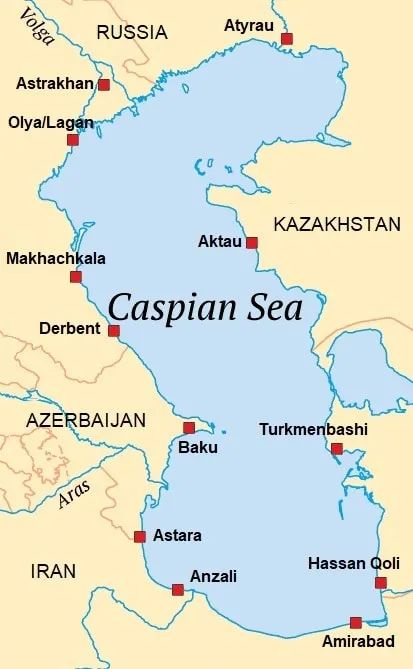Against the background of the continuous growth of Eurasian trade and container land transportation, it is necessary to seek a new trade corridor for sustainable development for the market by overlapping geopolitical interference. The European Bank for Reconstruction and Development (EBRD) is conducting research on the sustainable connectivity between Central Asia and Europe. The research is funded by the European Commission and will be completed in the summer of 2023, aiming to determine the most sustainable and feasible docking scheme between the Central Asian economies and Europe's TEN-T pan European transport network.
On August 8, the European Bank for Reconstruction and Development released the interim results of the study. Let's see it first.
The central or trans Caspian corridor through Kazakhstan (Editor's Note: the "South Passage" of China Europe Train) is generally considered the second best land route option. In the first quarter of 2022, nearly 20000 TEUs will be transported to Aktau Port and Kuryk Port in the Caspian Sea through Kazakhstan. Assuming that the demand continues to rise, the annual freight volume through the middle corridor may reach 80000TEU in 2022. This figure is close to the maximum capacity of 100,000-120,000 TEUs, mainly due to the limited number of ships in Caspian Sea and the irregular shipment schedule. If this corridor becomes the new route preferred by freight companies, the existing Caspian infrastructure may become a real bottleneck. 10% of the transit goods in the northern corridor (crossing Russia) are diverted to the central corridor, which requires a lot of investment, and its economic efficiency remains to be assessed. The European Bank for Reconstruction and Development estimates that the direct investment demand for infrastructure upgrading in the Central Corridor is about 3.5 billion euros.
Uzbekistan is currently seeking multimodal transport cooperation (road and railway) with China, and goods pass through Kyrgyzstan by road. If the goods continue to travel to the west, they will pass the trans Afghan railway or the roads in Turkmenistan and Iran. For Uzbekistan, other options include using the Central Corridor of Kazakhstan or Turkmenbashi Port in Turkmenistan.

Main ports of the Caspian Sea (source: PortSEurope)
The transit cost of the route from Turkmenbashi Port to Poti Port in Georgia through the Caspian Sea is the highest among several routes, which is almost impossible economically. The efficiency of the port is extremely low, and the number of branch ships in operation is very limited, so there is a greater bottleneck problem than that of the port in Kazakhstan. In addition, Turkmenistan is not a party to international agreements, and relevant cooperation will require additional bilateral consultations.
The road route through Turkmenistan and Iran may be an interesting solution, but there are many serious restrictions. Turkmenistan's health and logistical requirements are complex, and the country is currently reluctant to negotiate adjustments. Like Turkmenistan, Iran is not a party to international agreements, so it is a long process to make arrangements through bilateral agreements. In addition, Iran is also a country subject to sanctions from Europe and the United States. European operators are difficult to operate there unless they have local subsidiaries that can circumvent sanctions.
Kazakhstan already has a developed transport network, two seaports and two railway crossing points with China. In addition, some large-scale projects are still being prepared or carried out to further promote the trade and transport links between the East and the West, including the repair and electrification of railway sections, the construction of new railway lines and the expansion of port infrastructure.
Uzbekistan is actively developing transport links with all its neighbours, but as a landlocked country, it must rely on transit routes through other countries to make itself a viable transit option. Uzbekistan Railways is the main freight transport operator in the country, which still needs to be reformed to improve efficiency. The electrification of the railway between the Fergana Valley, Bukhara and Khiva and other major cities, as well as other places, still needs a lot of investment. The same is true of roads across the country. At the same time, Uzbekistan should modernize its rolling stock and improve customs services to ensure smooth transit transport.
The multimodal transport route from Kazakhstan to Caspian Sea port seems to be the most stable choice for goods to pass through Uzbekistan, but the border crossing between Kazakhstan and Uzbekistan is inefficient, and Aktau Port and Kurik Port also have bottlenecks. More importantly, the Caspian Sea is not always navigable, so Uzbekistan has a strong desire to explore alternative solutions (Editor's Note: such as the China Kyrgyzstan Uzbekistan Railway). This is also likely to stimulate Kazakhstan to further improve the quality of business services and border management efficiency.
China Trade Express Logistics Synchronizes World Life!


China Trade Express Logistics (ShenZhen) Co., Ltd 粤ICP备20062912号